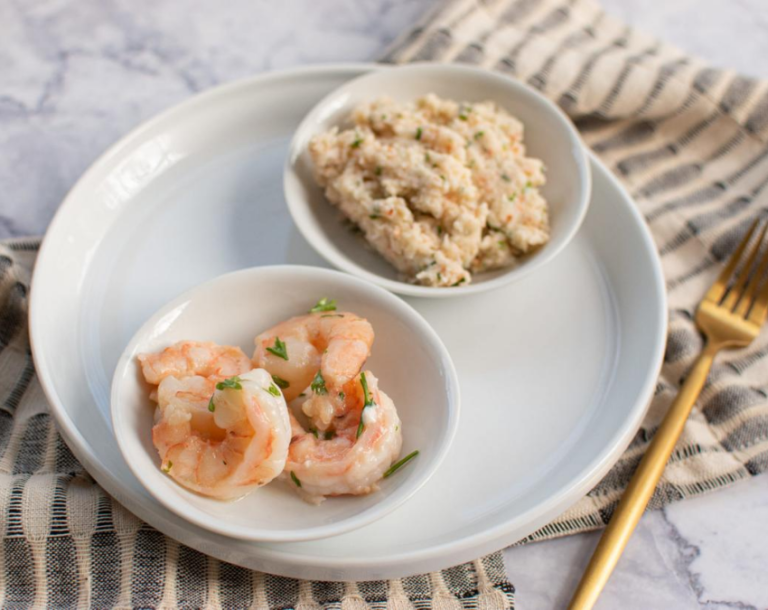By Kristen Carli, MS, RD
Why use our Bariatric Calorie Calculator? Bariatric surgery is a life-changing procedure that can help individuals achieve significant weight loss and improve their overall health. However, maintaining a healthy weight and lifestyle after surgery requires careful attention to diet and exercise. One important aspect of post-bariatric surgery care is monitoring calorie intake to ensure that the body is receiving the necessary nutrients without consuming excess calories. Use our Bariatric Calorie Calculator below.
What is TDEE?
TDEE is a comprehensive measurement of the total amount of energy, in the form of calories, that an individual expends over the course of a day. It represents the sum of all the calories burned by the body through various activities, including basal metabolic rate (BMR), physical activity, and the thermic effect of food (TEF).

How is this calculated? – Bariatric Calorie Calculator
Calculating TDEE involves estimating the total number of calories your body needs to maintain its current weight based on several factors. One of the most common methods to calculate TDEE is using the Harris-Benedict equation, which takes into account your Basal Metabolic Rate (BMR) and activity level.
1. Calculate BMR: BMR represents the number of calories your body needs at rest to maintain basic physiological functions. The Harris-Benedict equation is used to calculate this:

2. Determine Activity Level: Your activity level is classified into one of several categories ranging from sedentary to very active. This factor is used to adjust your BMR to estimate your TDEE based on your typical daily activities.
– Sedentary (little or no exercise): TDEE = BMR x 1.2
– Lightly active (light exercise/sports 1-3 days/week): TDEE = BMR x 1.375
– Moderately active (moderate exercise/sports 3-5 days/week): TDEE = BMR x 1.55
– Very active (hard exercise/sports 6-7 days a week): TDEE = BMR x 1.725
– Extra active (very hard exercise and a physical job): TDEE = BMR x 1.9

3. Calculate TDEE: Multiply your BMR by the appropriate activity factor to estimate your Total Daily Energy Expenditure:
– TDEE = BMR x Activity Factor
For example, if a sedentary woman with a BMR of 1500 calories per day calculates her TDEE, it would be:
– TDEE = 447.593 + (9.247 x weight in kg) + (3.098 x height in cm) – (4.330 x age in years) x 1.2
Use our Bariatric Calorie Calculator below
How to reduce caloric intake
Calculating your TDEE can help you determine how many calories you need to maintain your current weight. To lose weight, you would typically consume fewer calories than your TDEE, creating a calorie deficit. Conversely, to gain weight, you would consume more calories than your TDEE, creating a calorie surplus.
Reducing calorie intake scientifically involves creating a calorie deficit, where you consume fewer calories than your body expends. Here are some evidence-based strategies to help you achieve this:
1. Track Your Food Intake: Keeping a food diary or using a food tracking app can help you become more aware of your calorie intake and identify areas where you can make adjustments.
2. Reduce Portion Sizes: Use smaller plates and serving utensils to help control portion sizes and prevent overeating.
3. Choose Low-Calorie, Nutrient-Dense Foods: Focus on foods that are low in calories but high in nutrients, such as fruits, vegetables, lean proteins, and whole grains.
4. Limit Added Sugars and Sweets: Reduce your intake of sugary foods and beverages, which can contribute to excess calorie intake.
5. Be Mindful of Liquid Calories: Avoid high-calorie beverages like soda, juice, and sweetened coffee drinks, and opt for water, herbal tea, or unsweetened beverages instead.
6. Cook at Home: Prepare meals at home using fresh, whole ingredients, which can help you control the ingredients and portion sizes.
7. Increase Your Protein Intake: Protein-rich foods can help you feel fuller for longer, reducing the likelihood of overeating. Try our protein bars, shakes, and soups for easy options.
8. Stay Hydrated: Drinking water before meals can help you feel fuller and reduce calorie intake.
9. Limit Processed Foods: Processed foods are often high in calories, unhealthy fats, and added sugars, so it’s best to limit their consumption.
10. Practice Mindful Eating: Pay attention to your hunger and fullness cues, and eat slowly to prevent overeating.

It’s important to make sustainable changes to your diet rather than resorting to drastic or restrictive measures. Gradual changes that you can maintain in the long term are more likely to lead to successful weight management.
What exercise burns what
The number of calories burned during exercise varies depending on the type of activity, intensity, duration, and individual factors such as weight and fitness level.
Here’s a general overview of the approximate calories burned per hour for different types of exercise for a person weighing around 155 pounds:
1. Walking (3.5 mph): Burns about 280-320 calories per hour.
2. Jogging/Running: Burns about 590-930 calories per hour, depending on speed and intensity.
3. Cycling (12-14 mph): Burns about 590-750 calories per hour.
4. Swimming (moderate): Burns about 470-590 calories per hour.
5. Strength Training: Burns about 210-310 calories per hour, depending on intensity.
6. Yoga: Burns about 180-300 calories per hour, depending on the style and intensity.
7. Dancing (moderate): Burns about 330-500 calories per hour.
8. Hiking: Burns about 430-550 calories per hour, depending on intensity and terrain.
What other factors affect calorie burn
Several factors can influence the number of calories burned during exercise. These include:
1. Weight: Heavier individuals typically burn more calories because it takes more energy to move a larger body mass.
2. Muscle Mass: Muscle tissue burns more calories at rest than fat tissue, so individuals with more muscle mass tend to burn more calories.
3. Age: Metabolism tends to slow down with age, which can lead to fewer calories burned during exercise.
4. Gender: Men generally have a higher muscle mass and lower body fat percentage than women, so they tend to burn more calories.
5. Fitness Level: More fit individuals may burn fewer calories doing the same exercise because their bodies are more efficient at performing the activity.
6. Intensity: Higher-intensity exercise generally burns more calories per minute than lower-intensity exercise.
7. Duration: Longer workouts burn more calories, but there can be diminishing returns if the workout is too long or intense.
8. Exercise Type: Different types of exercise engage different muscles and energy systems, leading to variations in calorie burn.
9. Environmental Factors: Temperature, humidity, and altitude can affect the number of calories burned during exercise.
10. Health Conditions: Certain health conditions or medications can affect metabolism and calorie burn.
11. Efficiency: Over time, the body may become more efficient at performing a particular exercise, leading to fewer calories burned.

Summary
In conclusion, the Bariatric Calorie Calculator is a valuable tool for individuals who have undergone bariatric surgery to help them manage their weight and maintain a healthy lifestyle. By calculating TDEE and understanding the factors that affect calorie intake and burn, individuals can make informed decisions about their diet and exercise routine. It’s important to approach weight management with a balanced and sustainable mindset, focusing on long-term health and well-being. With the right tools and strategies, individuals can achieve their weight loss goals and improve their overall quality of life.



What are your tips and tricks to post-bariatric success?